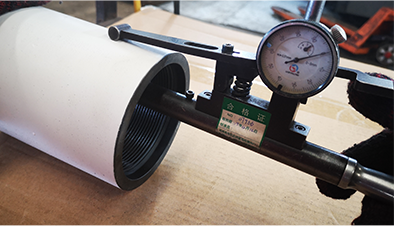- Afrikaans
- Albanian
- Amharic
- Arabic
- Armenian
- Azerbaijani
- Basque
- Belarusian
- Bengali
- Bosnian
- Bulgarian
- Catalan
- Cebuano
- Corsican
- Croatian
- Czech
- Danish
- Dutch
- English
- Esperanto
- Estonian
- Finnish
- French
- Frisian
- Galician
- Georgian
- German
- Greek
- Gujarati
- Haitian Creole
- hausa
- hawaiian
- Hebrew
- Hindi
- Miao
- Hungarian
- Icelandic
- igbo
- Indonesian
- irish
- Italian
- Japanese
- Javanese
- Kannada
- kazakh
- Khmer
- Rwandese
- Korean
- Kurdish
- Kyrgyz
- Lao
- Latin
- Latvian
- Lithuanian
- Luxembourgish
- Macedonian
- Malgashi
- Malay
- Malayalam
- Maltese
- Maori
- Marathi
- Mongolian
- Myanmar
- Nepali
- Norwegian
- Norwegian
- Occitan
- Pashto
- Persian
- Polish
- Portuguese
- Punjabi
- Romanian
- Russian
- Samoan
- Scottish Gaelic
- Serbian
- Sesotho
- Shona
- Sindhi
- Sinhala
- Slovak
- Slovenian
- Somali
- Spanish
- Sundanese
- Swahili
- Swedish
- Tagalog
- Tajik
- Tamil
- Tatar
- Telugu
- Thai
- Turkish
- Turkmen
- Ukrainian
- Urdu
- Uighur
- Uzbek
- Vietnamese
- Welsh
- Bantu
- Yiddish
- Yoruba
- Zulu
Understanding Bull Plug Dimensions and Their Importance in Various Applications
Understanding Bull Plug Dimensions A Comprehensive Guide
In the realm of plumbing and hydraulic systems, connectors and plugs play a crucial role in ensuring the integrity and performance of systems. One such component that draws attention is the bull plug. Also known as a pipe plug, the bull plug is often used to seal off ends of pipes, fittings, or other types of equipment. This article will delve into the various dimensions of bull plugs, their significance, and how they affect different applications.
What is a Bull Plug?
A bull plug is a cylindrical fitting designed to close the end of a pipe. It typically has male threads on one side to screw into a corresponding female threaded pipe or fitting. The bull plug can be made from various materials such as brass, stainless steel, PVC, or other plastics, depending on the application. Its primary function is to prevent the loss of fluids or gases and to protect the ends of pipes from contamination.
Importance of Proper Dimensions
When selecting a bull plug, understanding dimensions is critical. Using the correct size ensures a tight seal, which is vital to maintain pressure and prevent leaks. The dimensions of a bull plug typically include
1. Nominal Pipe Size (NPS) This refers to the diameter of the pipe that the plug will fit into. It is essential to match the NPS when selecting a bull plug; otherwise, it will not provide a proper fit.
2. Thread Pitch This measurement indicates the distance between the threads. It is crucial as mismatched thread pitches can lead to cross-threading or improper sealing, resulting in leaks.
3. Length The overall length of the bull plug can vary depending on its design. It is important to ensure that the plug is long enough to provide a secure fit while not being excessively long, which might complicate installation.
4. Material Thickness Depending on the material, the wall thickness of the bull plug can influence its durability and resistance to pressure. Thicker walls generally provide better strength but may also increase costs.
bull plug dimensions

Common Dimensions
While bull plugs come in various shapes and sizes, they typically align with standard plumbing measurements. Here are some common dimensions
- 1/8 Bull Plug This size is often used in smaller lines where minimal flow is necessary. It typically features a thread size of 27 NPT (National Pipe Thread) and a length of approximately 1 inch.
- 1/4 Bull Plug This is slightly larger and is frequently utilized in both residential and commercial plumbing. It usually has a thread size of 18 NPT, with a length of about 1.5 inches.
- 1/2 to 1 Bull Plugs As the sizes increase, the applications often include higher pressure systems and larger pipes. The thread sizes can vary from 14 NPT for 1/2 to 11.5 NPT for 1.
- Larger Sizes For applications that require significant flow closure, plugs over 1 inch are available, each coming with unique specifications based on manufacturer standards.
Applications of Bull Plugs
Bull plugs find usage across various industries, including water supply, gas pipelines, and hydraulic systems. In residential plumbing, they are often employed to temporarily seal off hot water lines during repairs. In industrial applications, they can be critical in maintaining system integrity during maintenance or when equipment is taken offline.
Conclusion
Understanding the dimensions of bull plugs is essential for anyone involved in plumbing, construction, or industrial maintenance. Selecting the right size and type not only ensures effective sealing but also maintains the safety and functionality of the entire system. Therefore, it's imperative to consult specifications and utilize appropriate measuring tools before making a purchase. Remember, the right bull plug can save time, reduce costs, and most importantly, avert potential leaks that could lead to catastrophic failures.
-
Tubing Pup Joints: Essential Components for Oil and Gas OperationsNewsJul.10,2025
-
Pup Joints: Essential Components for Reliable Drilling OperationsNewsJul.10,2025
-
Pipe Couplings: Connecting Your World EfficientlyNewsJul.10,2025
-
Mastering Oilfield Operations with Quality Tubing and CasingNewsJul.10,2025
-
High-Quality Casing Couplings for Every NeedNewsJul.10,2025
-
Boost Your Drilling Efficiency with Premium Crossover Tools & Seating NipplesNewsJul.10,2025







